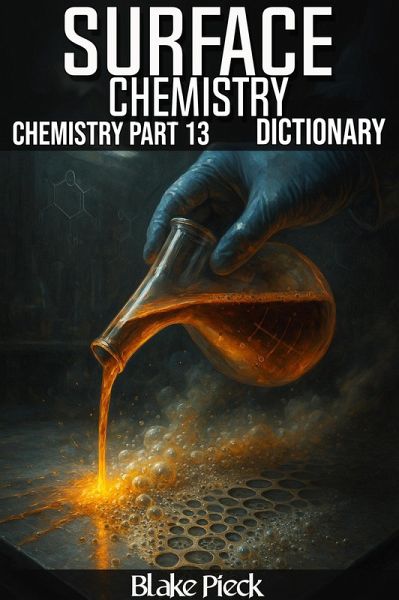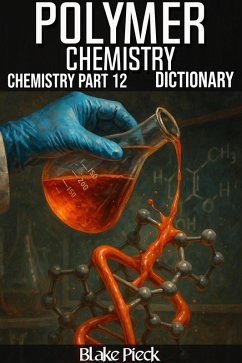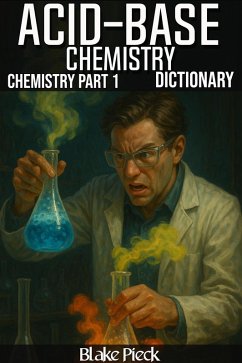
Surface Chemistry - Chemistry Part 13 Dictionary (Grow Your Vocabulary) (eBook, ePUB)

PAYBACK Punkte
0 °P sammeln!
Surface chemistry focuses on the reactions and interactions that take place at the boundary between phases. It studies adsorption, catalysis, colloids, and thin films, showing how processes at the molecular level influence large-scale behavior. From how detergents clean to how catalysts drive industrial reactions, surface chemistry reveals how much depends on the properties of interfaces.In the broader context of chemistry, this field bridges physical, inorganic, and materials science. It links microscopic interactions with macroscopic outcomes, connecting laboratory studies with applications ...
Surface chemistry focuses on the reactions and interactions that take place at the boundary between phases. It studies adsorption, catalysis, colloids, and thin films, showing how processes at the molecular level influence large-scale behavior. From how detergents clean to how catalysts drive industrial reactions, surface chemistry reveals how much depends on the properties of interfaces.
In the broader context of chemistry, this field bridges physical, inorganic, and materials science. It links microscopic interactions with macroscopic outcomes, connecting laboratory studies with applications in energy storage, nanotechnology, medicine, and environmental science. By examining the chemistry of surfaces, learners see how small changes at boundaries can alter entire systems.
This dictionary organizes the language of surface chemistry into clear and comprehensive entries. It includes definitions of adsorption isotherms, surface tension, colloidal stability, catalytic processes, and analytical methods for surface study. Each entry offers context and explanation, supporting students in their studies, helping teachers guide learning, and giving professionals a dependable reference for research and practice.
Studying through a dictionary format strengthens mastery of terminology, encouraging connections between related concepts and improving long-term retention. Surface chemistry is central to many modern technologies, from sensors and coatings to fuel cells and pharmaceuticals. Gaining fluency in its vocabulary provides readers with the tools to understand and contribute to advances across science and industry.
In the broader context of chemistry, this field bridges physical, inorganic, and materials science. It links microscopic interactions with macroscopic outcomes, connecting laboratory studies with applications in energy storage, nanotechnology, medicine, and environmental science. By examining the chemistry of surfaces, learners see how small changes at boundaries can alter entire systems.
This dictionary organizes the language of surface chemistry into clear and comprehensive entries. It includes definitions of adsorption isotherms, surface tension, colloidal stability, catalytic processes, and analytical methods for surface study. Each entry offers context and explanation, supporting students in their studies, helping teachers guide learning, and giving professionals a dependable reference for research and practice.
Studying through a dictionary format strengthens mastery of terminology, encouraging connections between related concepts and improving long-term retention. Surface chemistry is central to many modern technologies, from sensors and coatings to fuel cells and pharmaceuticals. Gaining fluency in its vocabulary provides readers with the tools to understand and contribute to advances across science and industry.
Dieser Download kann aus rechtlichen Gründen nur mit Rechnungsadresse in A, B, CY, CZ, D, DK, EW, E, FIN, F, GR, H, IRL, I, LT, L, LR, M, NL, PL, P, R, S, SLO, SK ausgeliefert werden.













